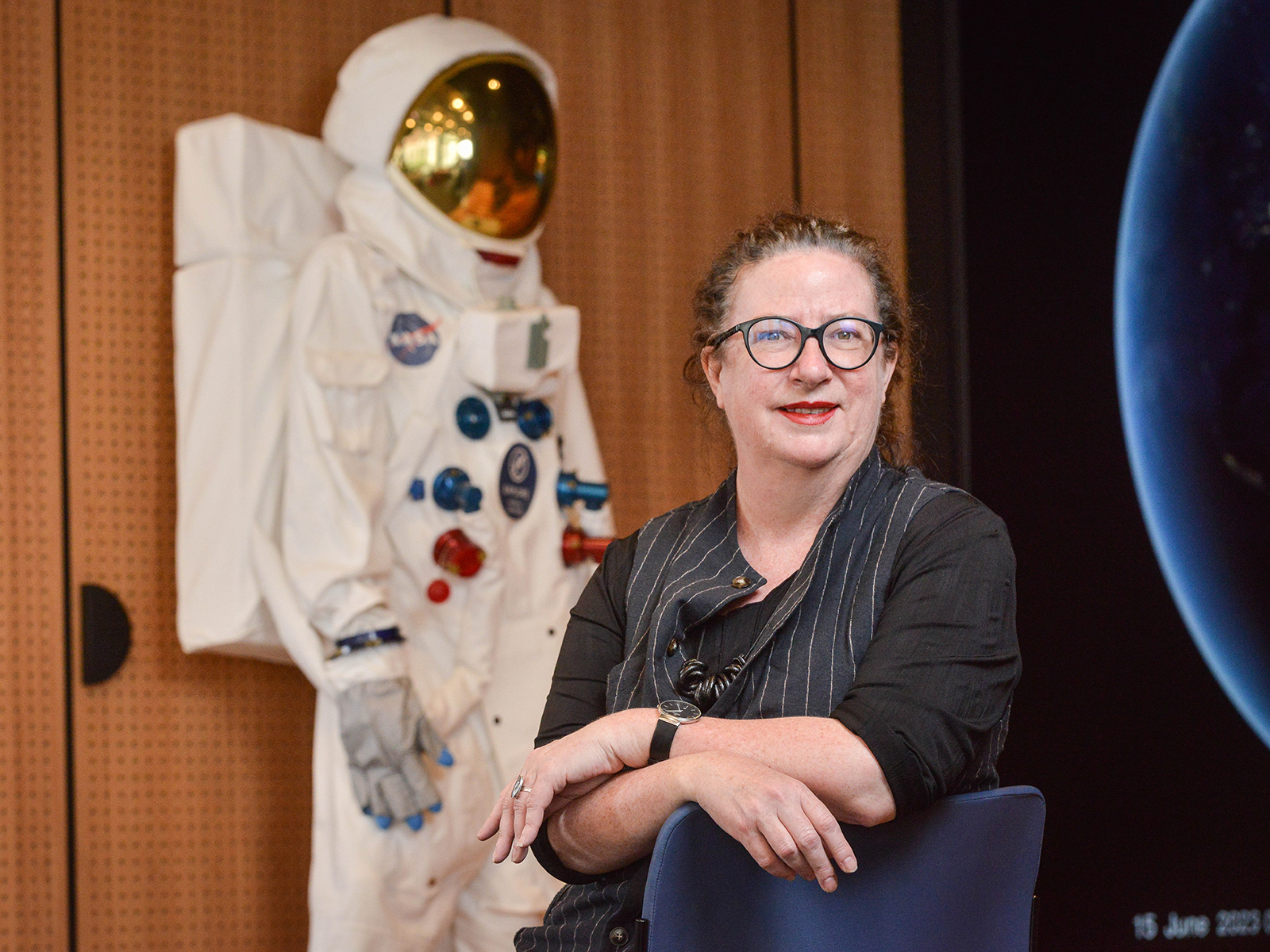
By Bill Condie
Space archaeologist Associate Professor Alice Gorman is charting our journey towards the final frontier.
Ever since humans began brushing the edges of space in the 1940s, we have been leaving artefacts that chart the Space Age as surely as pottery shards in Çatalhöyük map life in a neolithic city.
Since the early 2000s, Flinders University Associate Professor Alice Gorman has been sifting through these latter-day shards – space junk, rocket launch pads and antennas – in her pioneering work as a space archaeologist.
“Some archaeologists say what we do isn’t archaeology, and some space people just can’t get their heads around the fact that something they think of as being about the past has relevance for them,” she says.
“One of our big battles has been convincing them that archaeological methods can give them new information that you literally cannot get any other way.”
In her latest project, Associate Professor Gorman and her colleague Dr Justin Walsh, an archaeologist at Chapman University in California, are building the first record of life aboard humankind’s first off-Earth proto-settlement – the International Space Station (ISS).
“It’s the longest permanently occupied space habitat that humans have ever had,” Associate Professor Gorman says.
“So it’s a perfect laboratory to look at how humans use material culture to adapt to space. The problem, of course, is that we can’t go there.”
Instead she and Dr Walsh hit on the idea of using NASA’s image archive of the ISS as a “vicarious excavation”. In one experiment they are sampling the space station in the way archaeologists would a terrestrial dig, by dividing it into a grid and selecting six one metre by one metre squares for detailed study.
“We had two months. For the first, the crew took photographs of the six squares at the same time every day. In the second month they took photographs at random times of day to rule out the fact that there might be certain routines or patterns of behaviour that would obscure others. Now we have this massive archive of photographs to analyse.”
So far the most closely observed is in the galley area, where people gather for meals.
“In one particular square there are little mesh bags that they use for personal food and condiments, and that raises interesting issues around things that are there the longest. Some objects like bottles of hot sauce were there for the whole two months. Now what does that mean? Does that mean that they’re highly used or in fact not highly used?”
Associate Professor Gorman is also intrigued by the many little velcro squares on the wall throughout the ISS, some used continuously over the past 20 years as “little patches of gravity”.
“Lots of them are really filthy, which might seem trivial, but from an archaeological perspective it could mean either that the patches are really old or have been used a lot. Then there’s where crew themselves have placed velcro, so there is the evolution of hypotheses about what crew need.”
While the work will give future generations an intimate picture of how the early days of space habitation unfolded, Associate Professor Gorman also hopes it will provide useful insights for future design.
“Unlike most archaeologists, we have the opportunity to contribute to things in the future. And one of the things we’re working on is results to guide the manufacture of new space habitats,” says Associate Professor Gorman.
“We have insights to offer that will lead to the design of better space habitats in the future.
“Often the needs of the crew are the last thing to be taken into account. To NASA and other space agencies ‘human factors’ generally mean psychological or biomedical. They don’t include sociological or personal and this is where we come in.”

